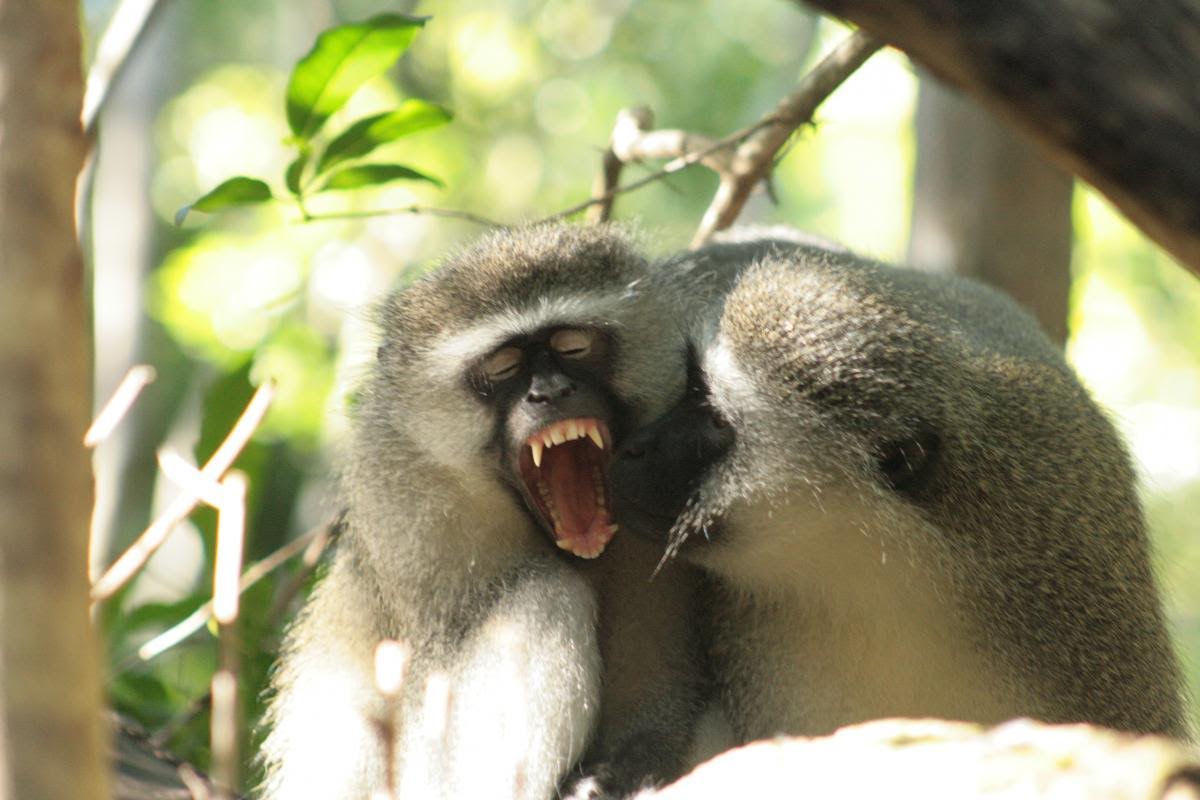
Cercopithecus aethiops, more commonly known as the Vervet monkey, are lightly furred and black faced, 16 to 20 in. tall, herbivorous primates inhabiting the savannah, forests, and mountains of Southern Africa. Preliminary facts about these incredible animals:
- Vervet monkeys elicit distinct alarm calls that are specific to their predators. Upon sighting of say, a leopard, a monkey will signal a “leopard call” to warn other monkeys within the group (usually ranging from about 10 to 70 individuals). The diversity of calls is extraordinary, including about 30 separate calls for animals such as baboons, pythons, eagles and even humans. The acoustic specificity of these alarm calls is of great interest to many animal researchers.
- Like many other social animals, there exists a dominance hierarchy within the Vervet communities, determined by age, duration of authority, physical ability, and allies for males. For females, the hierarchy is determined primarily through maternal social status.
After meticulous observation, animal researchers Donald Seyfarth and Dorothy Cheney witnessed certain social behaviors in the wild combining these two facts. Between low-ranking and high-ranking Vervet males, both have been observed to scan the environments for predators with the same frequency. Interestingly, however, low-ranking males elicit fewer alarm calls than higher ranked males, which researchers hypothesize as a conscious effort to stay quiet in hopes of the more dominant competitor’s failure. When tested in captivity, an adult male will not make an alarm call when a higher-ranking male is present, yet the same adult male will decide to make an alarm call when a female is present. This indicates that Vervet monkey alarm calls are more than just a warning system but are also used as a means to navigate social relationships.
Supplementary fact: Vervet monkey males have a blue scrotum and a red penis.